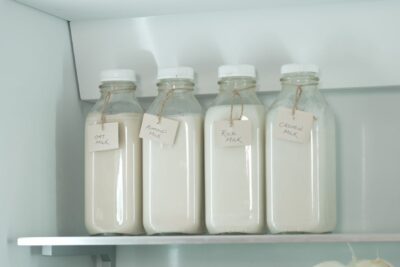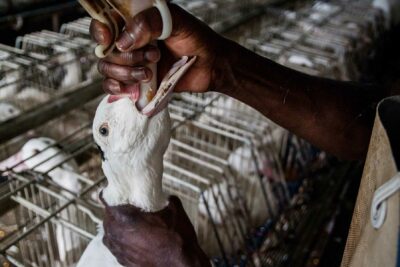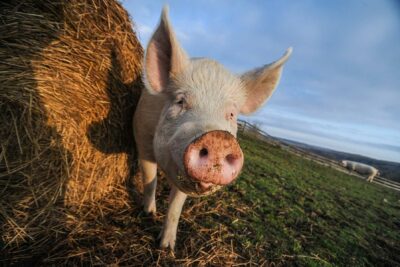Veal meat is the flesh of a baby cow, who has arguably endured more suffering in his short life than many others on our planet may ever endure in a lifetime. It is a controversial meat, whose production is banned in many countries as a result, although this has not ended the suffering and slaughter of millions of baby cows every year.
Veal production also has a dark and inextricable relationship with the dairy industry, as any male calves born as a result of forced impregnation for milk production, may be sold to the veal industry. As long as dairy exists, the many horrors of veal production will also.
What Is Veal Meat?
Veal meat is the flesh of a baby cow, generally killed at around six to eight months of age, but often much younger. These babies are taken from their mothers shortly after their birth and locked away, causing great suffering to both individuals.
Although consumption has declined in the US and UK, veal is still popular, particularly in Europe. Around 450,000 calves are slaughtered in the US per year for veal, compared to around six million calves in Europe. The UK has claimed their veal production has reduced, but in reality, the UK’s massive dairy industry is likely to sell thousands of calves to the European veal industry every year.
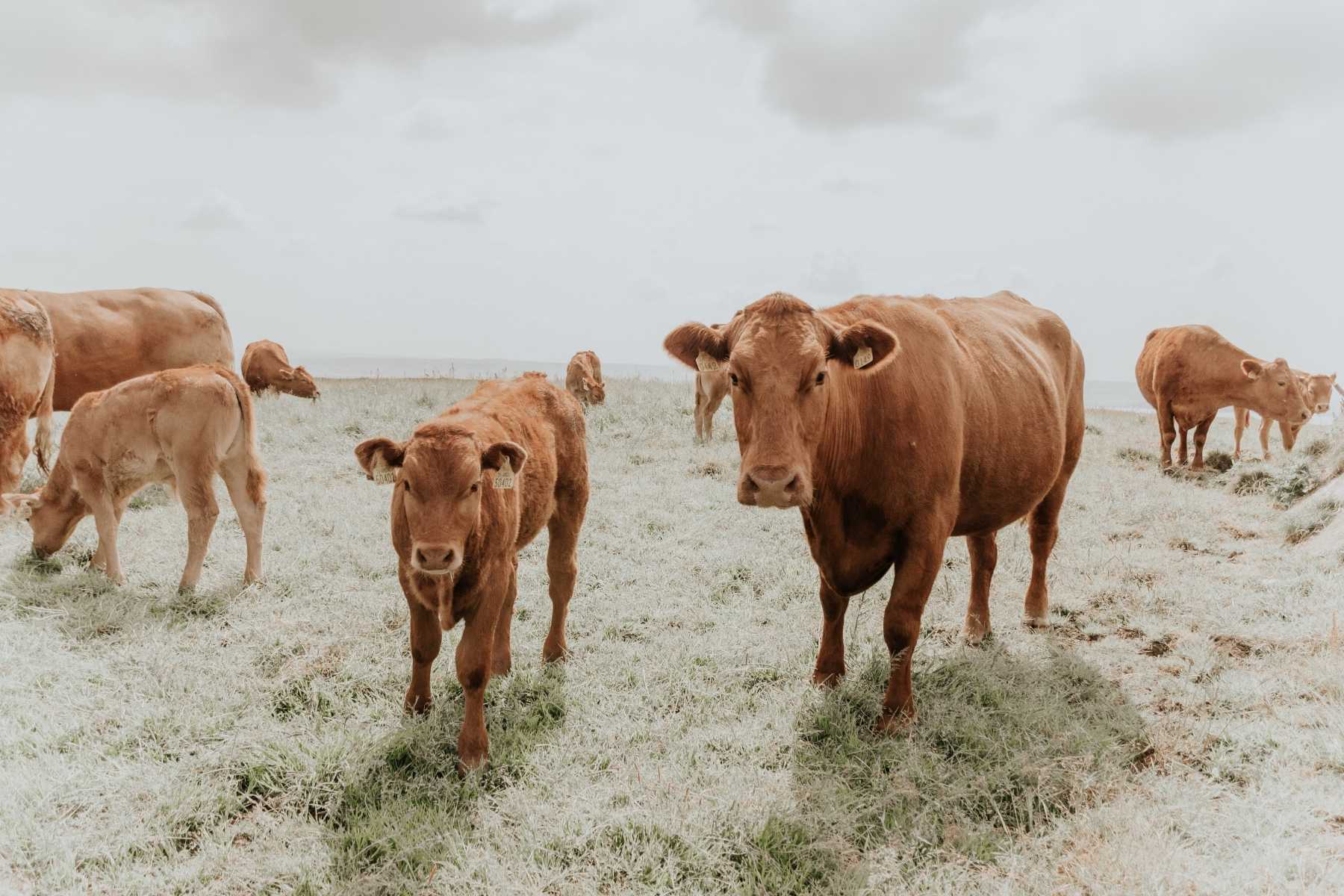
What Kind Of Meat Is Veal?
Unfortunately, killing calves within 12 months of birth is not the only form of veal, and other types that rely on a much earlier death for calves have emerged as niche versions of the product.
Rose Veal
The most common type of veal and the one considered the ‘highest welfare’ by the industry, rose veal is the flesh of a calf over 6 months of age who has been allowed to eat fiber and do some exercise. The meat is therefore darker than the white veal associated with calves killed younger and fed only a milk substitute for their whole lives.
Bob Veal
Bob veal calves are slaughtered between a couple of hours and a month after they are born. On average, they are killed at just two weeks old. The industry commits these barbaric acts because the meat of a younger, undernourished calf is ‘paler’ and ‘more tender’ than older animals, so they can fetch a higher price for it. Some bob veal farmers still use ‘veal crates,’ where the young calves are locked in a dark crate so they get no sunlight and cannot move. This deliberate limiting of their muscle development produces whiter, more tender meat. Because of their cruelty, veal crates have been outlawed in Europe and in some US states, but this horrendous practice is still common elsewhere. Bob veal makes up 15 percent of the US market.
Slink Veal
Slink veal is difficult to explain. It is so horrendous that it’s hard to imagine humans acting this way to another living being. Slink veal is harvested from stillborn or unborn calves, often collected from a mother who has been slaughtered whilst pregnant.
Slink veal is illegal in many countries, including the US and Canada, due it’s inexplicable cruelty and barbary. That does not mean it does not get produced, however.

How Are Veal Calves Raised?
It would be inaccurate to describe the veal farming process as ‘raising’ an animal, particularly in the sense of raising a child. Veal calves are farmed, often seen only as by-products of the dairy industry, whose only worth in life is the profit that can be gained from selling their bodies.
Calves and Mothers are Separated at Birth
Producing dairy requires a female cow to be forcibly impregnated and once she has given birth, to have her newborn stolen from her, so we can sell her milk. This process alone is unethical and barbaric, yet the industry wants to extract as much profit as it can from these animals, so of course her calf is sold for veal, too.
The agony experienced by mothers during this process is all too visible in their heartfelt cries for their young as they are taken away.
Long and Stressful Transport Journeys
Calves born in the dairy industry are targeted for veal and will often be subjected to long journeys on transport trucks, first to an auction house, where they are sold to the highest bidder, then on to a veal farm.
These journeys are often long and uncomfortable, undertaken in all kinds of weather conditions, and can result in stress and injuries for the calves. Imagine being pulled from your mother’s side within minutes of your birth and being transported miles in the bitter cold, rain or heat, to be sold off and slaughtered in your first 6-12 months of life.
This is what veal calves are subjected to, so that a few privileged people can enjoy a paler, more expensive version of the flesh they usually like to eat. It’s barbaric and indefensible.
Calves Are ‘Stunned’ Before Slaughter
As with most slaughter methods, stunning methods are used to theoretically prevent animals from suffering when their throats are slit. For cows and their calves, this could be with a bolt gun or an electric prod.
Stunning methods however, particularly those used on cows, are often ineffective and animals are sent to have their throat slit, completely conscious. This happens in the veal industry too, and babies have their throats cut, fully conscious, pining for their mothers.
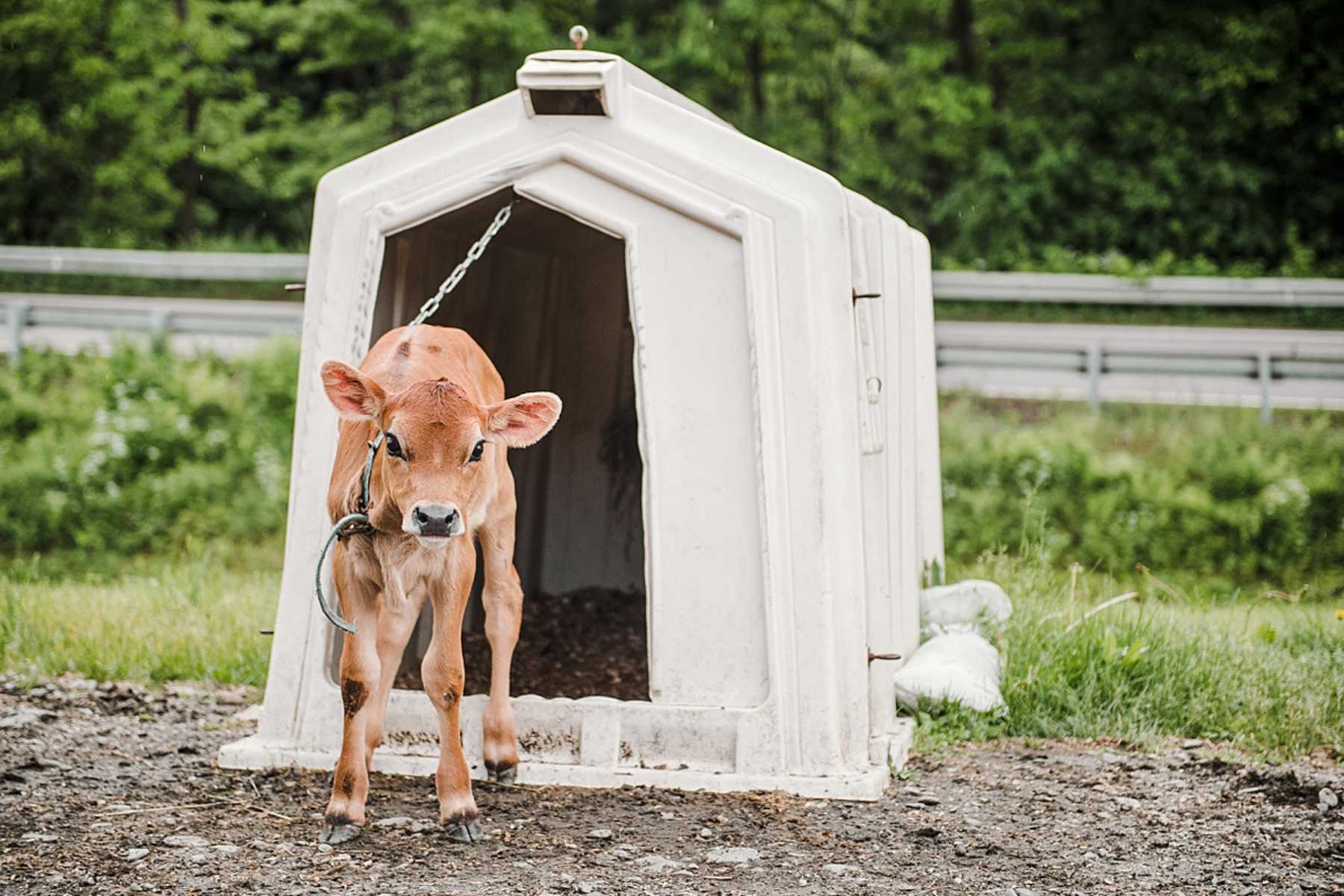
Why Is Veal Cruel?
We believe that taking the life of any animal who does not want to die is cruel. But the veal industry goes above and beyond when it comes to cruelty.
Veal Crates
Veal crates are small dark pens, just 0.8 by 1.8 meters, where newborn calves are kept for most of their short lives. These crates are illegal in Europe and a few states in the US, but they are still widely used by many veal companies to produce prized bob veal.
Veal crates are designed to strip these poor young animals of every instinct and behavior that is natural to them. They cannot move their delicate muscles, turn fully around, clean themselves or even stand up, let alone gambol around fields as they are supposed to. They are forced to sit in their own excrement and are fed an unhealthy, undernourished liquid feed.
All of this is inflicted upon them so that when they are slaughtered in the first few months of their life, their flesh is tender and pale, and will fetch a higher price. It is deeply saddening that a moment of sensory pleasure can be worth more to individuals than preventing such suffering.
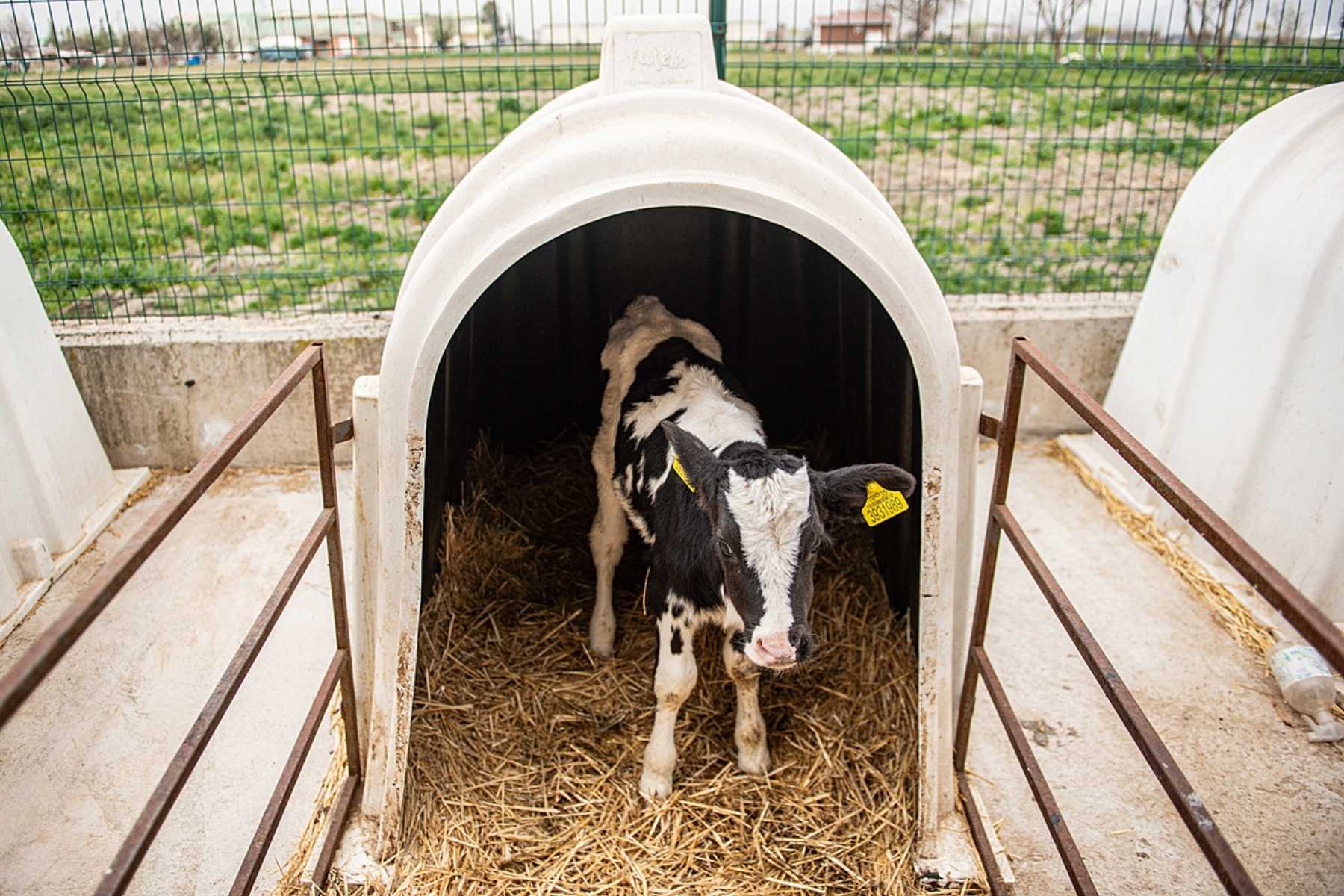
Restricted Space
Veal crates severely restrict space for calves who thrive on finding their feet early one and running and playing. In facilities that don’t use crates, veal calves are either kept in pens or crowded sheds, on wooden slatted floors and in barren environments that provide very little of what they need to feel comfortable and provide meaning. Lameness and injury are common.
Veal calves are rarely allowed any exercise or sunlight, as this may darken their flesh and make them less financially profitable.
Mental Anguish
Removal from their mothers, restrictions on their natural instincts, isolation, and lack of socialization all mean veal calves are likely to experience trauma and stress, and exhibit stereotypic behaviors. These include bar biting, tongue rolling, and over-resting, all of which indicate mental anguish and low welfare.
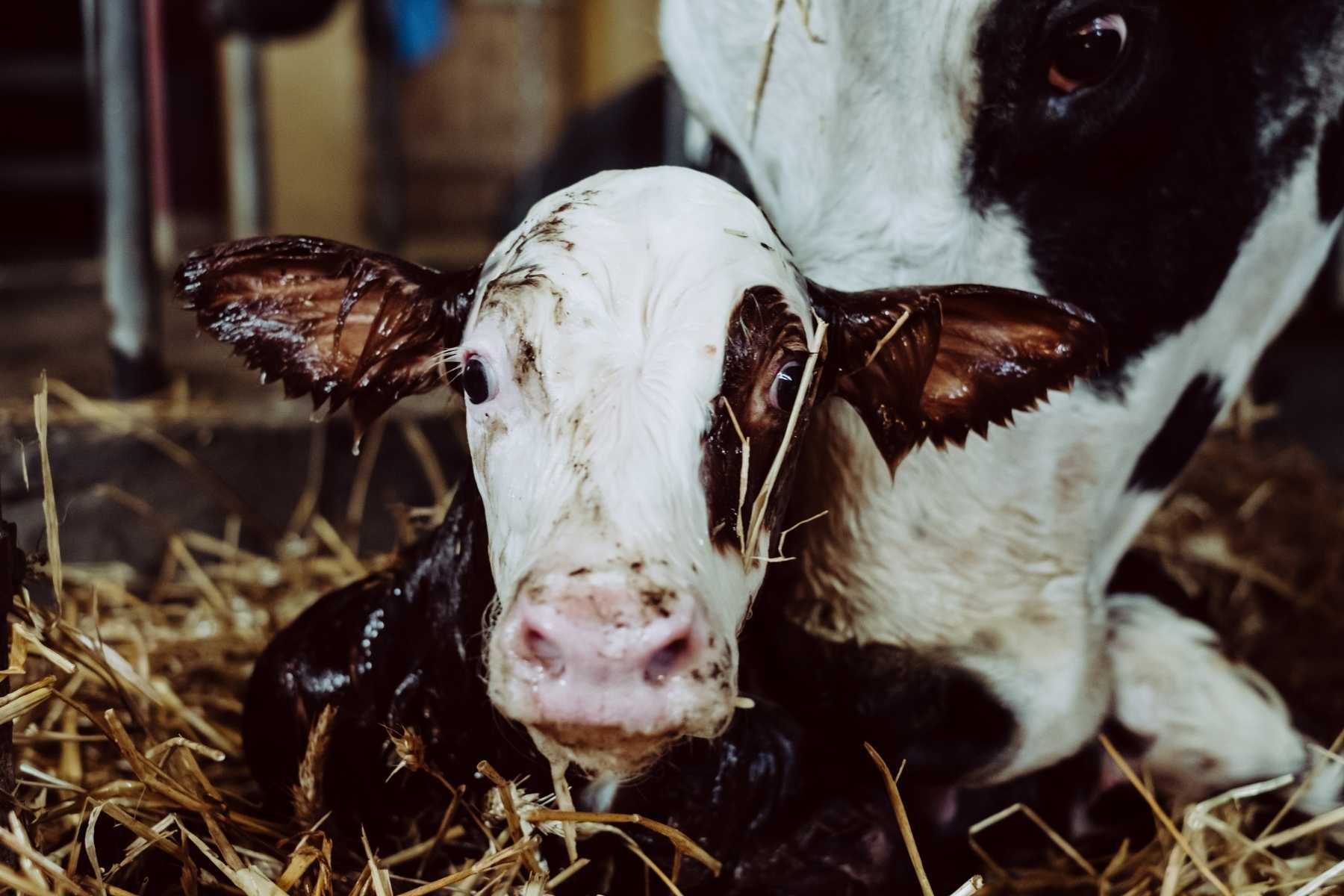
Poor Gut Health & Anemia
Almost all veal calves are severely anemic, as their diet is deliberately devoid of iron. This is carefully calculated as a way of keeping their flesh light in color. Their feed mix is also severely undernourished, leading to poor gut health and often severe diarrhea. None of this is by accident. This clear cruelty is inflicted upon these poor animals to make their flesh more profitable.
Susceptible to Disease
Their young immune systems and poor treatment often lead to veal calves being more susceptible to disease and infection. For this reason, veal calves are fed even more antibiotics on average than factory farmed pigs and chickens. Those who cannot avoid disease or infection may be shot and discarded.
Violence from Workers
There have been many reported cases of veal calves being punched, kicked, and dragged by farm workers. The animals’ only crime was being born into a system that treats them as valuable only once they are dead.
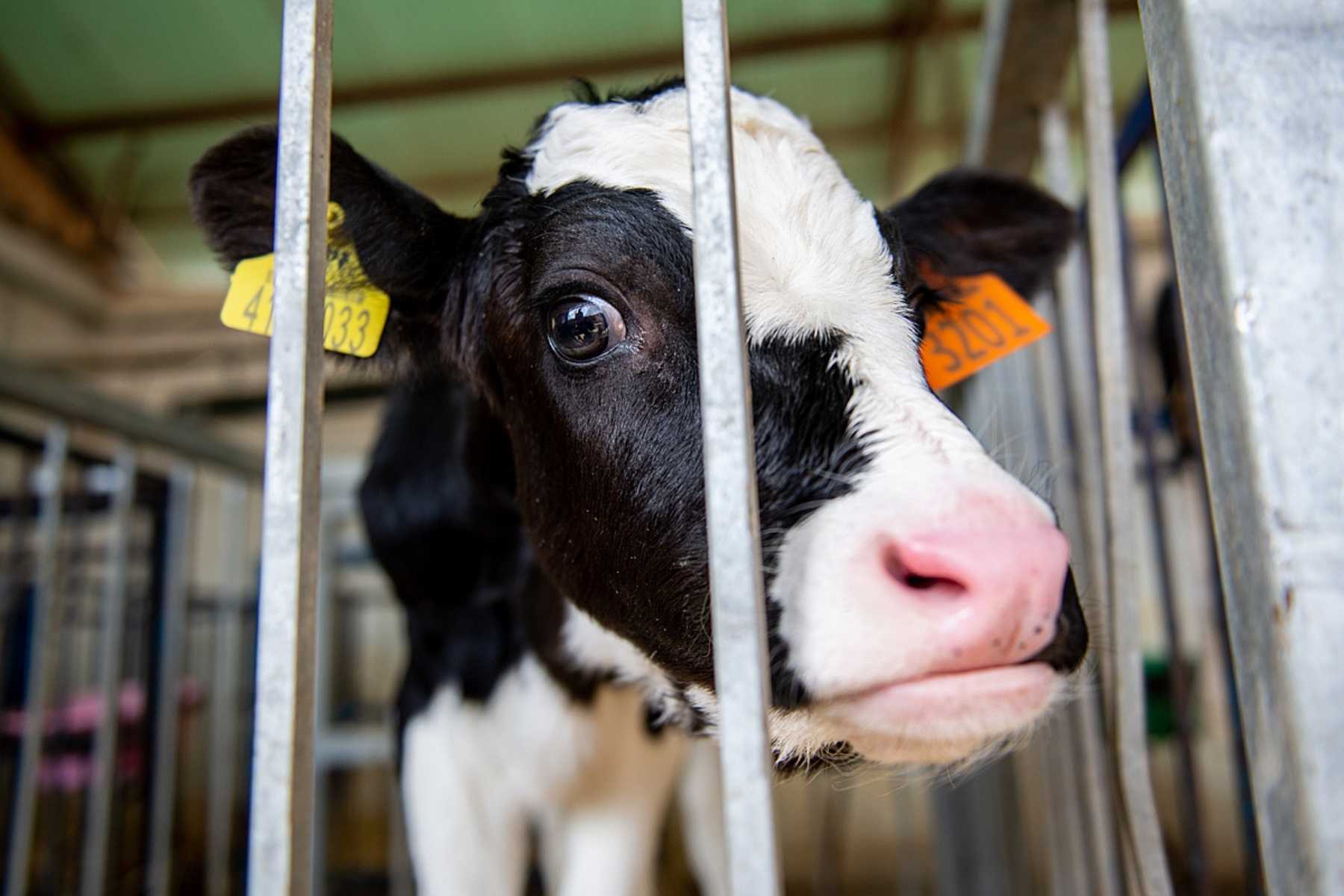
Veal Facts and Statistics
Are Antibiotics Used In Farming Veal?
- Yes, on average, calves are given more antibiotics than factory farmed pigs and chicken, due to calves’ young immune systems and the squalid and stressful conditions they are forced to endure.
- The veal industry has a lot to answer for on its contribution to the emergence of antibiotic-resistant bugs.
Why Is Veal Lighter than Beef?
For reasons we cannot fathom, white veal meat is more valuable, so cruel measures are taken to create it. Apparently, the more cruelty inflicted, the more people will pay. Therefore:
- Calves are deliberately starved of the nutrients they need.
- Calves are kept in confined spaces and not allowed to exercise, as this will strengthen their muscles and darken their meat.
How Much Veal Do People Consume?
Veal’s popularity has declined in recent years, likely from consumers’ welfare concerns. Yet, in high-end restaurants and grocery stores, it is still sold all over the world.
- Europe accounts for 82 percent of global veal consumption.
- France and the Netherlands both produce the most veal in Europe, slaughtering well over a million calves each per year.
- Veal is less popular in the US, with each person eating about 0.2 pounds per year.
What Happens To Bull Calves Of Dairy Cows That Aren’t Reared For Veal?
There are two fates. Some may be reared and slaughtered for beef, but if the cost of raising them is more than they are worth dead, they are shot on the first day of their life and their bodies discarded. A few lucky individuals are saved and find safety at a sanctuary but this unfortunately is very rare.
These 10 beautiful Fresian boys were saved from the veal industry and found sanctuary at Dean Farm Trust in England. They are evidence of what happens if we let these beautiful boys live a full life.
Is Veal Healthy?
Veal is often touted as a healthier option to beef. In reality, this is relative to beef, one of the most unhealthy foods we can consume. All red meat is carcinogenic and veal is still brimming with cholesterol. When there is an abundance of plant-based protein out there that is not only nutritious, but does not require slaughtering baby animals, why would anyone choose veal?
Why Does Veal Taste Different From Beef?
Veal meat is lighter and softer in texture. Both are reminders of the incredible suffering the baby cow went through to unwillingly provide his flesh for human consumption.
How Is Veal Legal?
We have asked ourselves the same question about all forms of intensive agriculture. The fact that it is not only legal, but encouraged from an economic standpoint, to rip newborn babies from their mothers, imprison them, starve them of nutrition and exercise, and finally slaughter them after only a few months of life, is unacceptable. As conscious beings, capable of empathy, we should know and do better.

Conclusion
Overall, veal is one of the most barbaric, unnecessary, and cruel products humans have cultivated. The majority of people would not imprison, kill and eat a baby cow if they were born in their backyard. On the contrary, they would care for them, or find someone who could. So, allowing someone else to not only kill them but to torture them on our behalf defies all moral consistency.
It’s time we put such industries in the past. Until we do, it’s hard to believe we can progress as a society.

